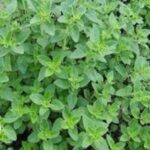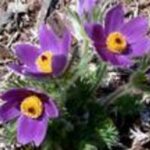Herbs and plants make up a large portion of the ingredients used by people throughout the ages to help combat disease and illness. Many of these medicinal plants are still used today all around the world. Take a peek at some of the different types of plants which are said to be useful for a variety of health reasons.
Since the Middle Ages yarrow has been considered a plant with medicinal properties. Europeans used tea made from yarrow to help stop internal bleeding. Today, yarrow has shown evidence of its usefulness as an antistringent and an anti-inflammatory agent.
Hollycock has proven to be effective in treating inflammation and respiratory difficulties. It is also used in the making of marshmallows.
From the Middle Ages through today, garlic has been found to be useful in many ways. Not only is it a great seasoning used in cooking, it has also been found to help with various ailments when consumed regularly. During World War I garlic was used to prevent infection in field dressings. Today it has shown to help lower blood pressure, blood sugar, and cholesterol.
Mugwort, or artemisia vulgaris (named for the Greek goddess, Artemis), is used for regulation of menstrual cycles in women. Many medical uses have been found for mugwort such as: an insect repellant, relief from aching feet, and to lessen labor pains.
The different species of digitalis (ambigua, lanata, purpurea) plants are all different variations of the more commonly known plant, foxglove. All of the digitalis species contain useful cardiac glycosides that help strengthen the heart muscle. Grecian foxglove is used to produce the drug lanoxin for the treatment of congestive heart failure.
You have probably heard of St. John’s Wort. The flowers are said to have medicinal properties that ward off evil spirits and treat mental disorders. It has also been used for tuberculosis, wounds, and pain treatment.
Horehound is not only a popular holiday flavor, it is used for some common respiratory problems, and as an appetite suppressant. Usually found in liquid or candy form, its extracts are helpful as an expectorant and cough suppressant.
Castor oil is made from the castor bean plant. Commonly used by folks as a laxative, it is also a cathartic, demulcent, and a purgative. Trials have been done in cancer therapy with its properties as a protein synthesis inhibitor.
Ancient Romans used the petals of the apothecary rose, marinated in wine, as a hangover remedy. Throughout the centuries the apothecary rose has been used for such ailments as depression, skin rashes, sore throats, and indigestion.
Since Shakespearean times, rosemary has been known as a symbol of fidelity between lovers. It is a popular flower of bridal bouquets and funeral arrangements. Rosemary leaves contain oil that when extracted is an important ingredient in the making of perfume. It is also known to stimulate cerebral circulation and enhance memory in some cultures.
Clary sage, also known as clear eye, was first used to treat diseases of the eyes. Other uses for clary sage include: menopausal remedy, indigestion reliever, and flatulence controller. Sage (salvia officinalis) is also used to reduce gastro-intestinal disturbances.
With its 25+ uses, betony was used frequently during the Middle Ages to ward off evil spirits. Betony has many common uses such as an antidiarrheal, antistringent, and as a remedy for chronic headaches, facial pain, anxiety, and irritations of the throat, mouth, and gums.
The Comanche and Sioux Indians used purple cone flower to treat burns, respiratory infections, cancers, and snakebites. In more modern times this flower has been found to have antibacterial, antiviral, and antibiotic properties.
The use of herbs, plants, flowers, and roots can be traced back beyond the Middle Ages. Modern day medicine would not be what it is today without some of these plant derivatives.
Source:
http://www.piam.com/mms_garden/plants.html




